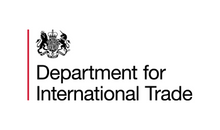21 Jul US FinTech and Banks Look for Industrial Revolution in Credit Risk Model Development Post-Covid
US Market Looks For Industrial Revolution in Credit Risk Model Development Post-Covid

On June 30th, 2021, the United Kingdom’s Department for International Trade (DIT) and SPIN Analytics convened a Thought Leadership Roundtable to discuss how the US banking ecosystem could and should accelerate the digitization of credit risk modelling in the light of COVID-19. The DIT and SPIN Analytics invited industry experts to share their experience, discuss the key challenges, and explore potential solutions. The roundtable was moderated by Andrew Stott, Senior Advisor to SPIN Analytics.
Essential Takeaways from the Roundtable:
- The COVID-19 pandemic introduced unprecedented levels of market turbulence and government intervention, leading to a “credit model accuracy crisis” mitigated by government support and expert judgment around credit models.
- While there has been a lot of research and development on the use of machine learning and artificial intelligence as to improve risk models, the process for developing and maintaining models remains largely manual, time consuming (up to 6+ months per model for regulated models), labor intensive, costly, and inflexible. Large banks deploy hundreds or even thousands of models, requiring support from hundreds of internal experts across multiple functions. Offering a more automated approach to credit risk modelling will improve banks’ ability to attract and retain talent.
- FinTech’s and Neo banks have an advantage of being able to adopt a more automated data-led approach from the start but have less history and therefore take more time to develop accurate credit models. Very large banks have vast resources and usually an Innovation team which is accelerating the adoption of new technologies. In the middle, the small to medium-sized banks may feel themselves squeezed without the resources of the large banks and with less ability to create fintech-style data environments.
- Digitization, automation and Explainable AI which can be approved by all regulators, remain important components of emerging solutions and continuing advances in technology will drive an “Industrial Revolution” of credit risk modelling in the coming year or two. SPIN Analytics’ RISKROBOT platform allows banks to automate their credit risk modelling end-to-end by applying expert judgment and providing regulatory-compliant explainable models in 10x reduced timeframes.

